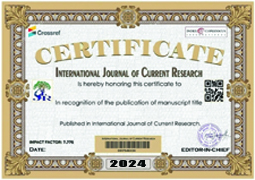Barnyard millet (Echinochloa colona), rich in fiber among minor millets processed by adopting different pre-milling treatments such as cold water soaking for 6-24 hours with 20 minutes steaming (Treatment I); hot water soaking for 1-5 hours with 20 minutes steaming (Treatment II); and steaming for 10-40 minutes (Treatment III). The treated millet was sun/shade dried and milled. Both raw and treated millet were analyzed for its physical, chemical, functional and milling characteristics. Results indicated that the dehusked grain contains significantly higher bulk density, true density, total carbohydrate and protein content than whole grain. The bulk density, grain hardness, water absorption capacity, oil absorption capacity and swelling power of both sun dried and shade dried barnyard millet subjected to various pre-milling treatments were in the range of 0.528 - 0.624 g/ml, 2 – 3.78 kg/mm2, 0.899 – 1.586 g/g, 1.094 – 1.848 g/g and 4.62 – 5.425 ml/g respectively. The carbohydrate, protein and crude fiber content were increased with increased hours of cold water soaking, hot water soaking and steaming at p<0.05. The dehulling yield was directly correlated to grain hardness, water absorption capacity, swelling power and protein content. Thus the study revealed that in all means of analysis A4 treatment was considered to be the best suitable pre-milling treatment for barnyard millet.





